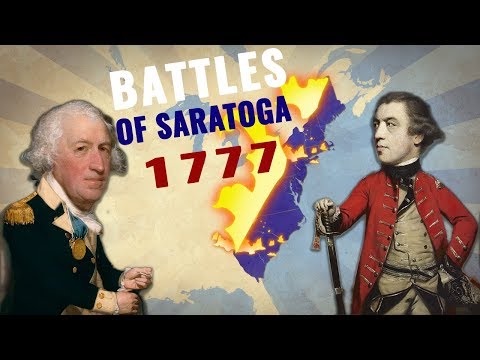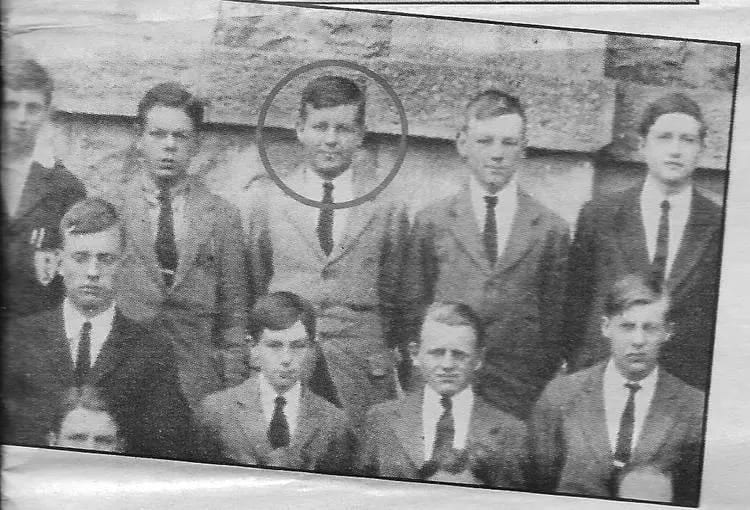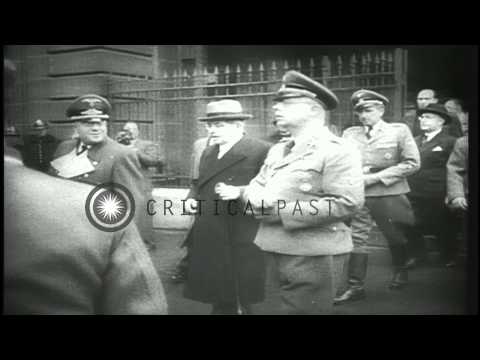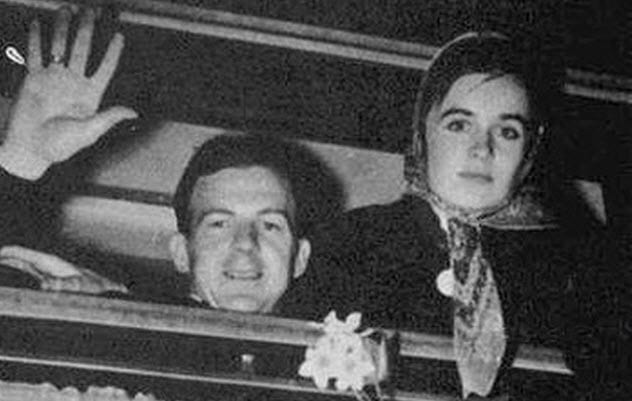So while we absolutely had to include the man synonymous with treason, Benedict Arnold – who singlehandedly almost killed America in its cradle – the remainder of this chronological collection includes lesser-known, yet no less treacherous, turncoats. 10 Notable Traitors in History
10 Benedict Arnold: The Dining Defector
Why America’s most infamous traitor switched sides mid-Revolutionary War is less interesting than its nearly devastating impact. Arnold’s defection resulted from a concurrence of run-of-the-mill factors such as mounting personal debt, resentment at being passed over for titles and assignments, and simple greed. So on September 21, 1780, Arnold pulled America’s most notorious dick move. The culmination of several coded correspondences, he met with intelligence chief British Major John André. The two conspired for the British to seize the American facility of West Point, which Arnold commanded. Arnold’s price was 20,000 pounds and a British military post. For the British, the prize was far more than a military installation. The plot included capturing General George Washington himself = while he dined with Arnold at West Point. A mixture of fighting and fortuitousness saved the day for the fledgling United States. The British ship HMS Vulture, awaiting André’s departure, was forced from the scene by American gunfire, forcing André to trek back to British lines posing as a civilian. André was confronted by three American militiamen. Unfortunately, he thought he was in British-held territory, a misconception bolstered because one soldier was wearing a British-allied German Hessian coat. “Gentlemen,” Andre said, “I hope you belong to our party.” “What party?” asked a militiaman. “The lower party,” replied André, meaning the British. Wrong answer. André was caught and hanged soon thereafter. As for Arnold, he got away aboard HMS Vulture, which had returned just in time to avoid his apprehension.
9 Horatio Gates: A Lesson in Meritocracy
Just as Americans resented Benedict Arnold’s betrayal, the British considered Horatio Gates a traitor. In colonial America, Gates was commended for his service during the French and Indian War – so much so he was selected to bring news of the British victory to England, for which he was promoted to Major. However, Gates was the son of a housekeeper, and advancement to the upper echelons of the British Army required money or influence. Gates had neither, so his career stalled. Frustrated, he sold his military commission (apparently that was legal back then) and returned to America in 1769. Ironically, he used that money to purchase land in Virginia, where he reconnected with his former commander, George Washington. When the American Revolution broke out six years later, Gates didn’t hesitate. He joined the Continental Army as a Brigadier General. Two years later, he stole the luster from a better-known subordinate named… you guessed it… Benedict Arnold. At 1777’s Battle of Saratoga, an American victory seen as the war’s turning point, Arnold led a high-risk attack against Gates’ consent that played a key role. In the end, Arnold suffered a serious leg injury while Gates, as his superior, was credited with a brilliant battlefield victory. The rest is history. Arnold became synonymous with “traitor,” while Gates – despite his involvement in an attempt to remove Washington from command and a disastrous defeat in 1780’s Battle of Camden – now has streets, towns and counties across America named in his honor.
8 John C. Pemberton: The Sudden Southerner
As their states seceded from the Union, many prominent US Army figures faced the ultimate decision: state or country. In early 1861, Abraham Lincoln offered Robert E. Lee command of all US forces. But when Virginia seceded on April 17, Lee followed his home state into the Confederacy. Such choices reflect the tighter bonds antebellum Americans had to their home states. But… a Pennsylvanian fighting for the south? That’s just treasonous. Philadelphia-born John C. Pemberton was a US Army officer for 25 years. He served with distinction during the Second Seminole War and the mid-1840s Mexican-American War. As the Civil War commenced, he led a garrison defending Washington, DC. But Pemberton’s wife was a Virginian. Despite hailing from solidly Union Pennsylvania, he resigned his post on April 29 and joined the nascent Confederacy. Though noticeably absent a Southern accent, Pemberton rose to the rank of Lieutenant General. His luck ran out at Vicksburg, Mississippi, in July 1863. After a siege so protracted that the city’s residents were eating mules, dogs and rats, Pemberton surrendered to then-Western US commander Ulysses Grant. However, so fierce was Pemberton’s dedication that, following Vicksburg, he insisted on a demotion and continued fighting until April 12, three days after Lee’s capitulation effectively ended the war. Buried in Philadelphia, the geographically confusing Pemberton might be the only Confederate leader with a statue in a southern city and a gravesite in a northern one.
7 Rose Greenhow: “The Northerners Are Coming!”
You’ve heard of Paul Revere… how about Rose Greenhow? Any civil war is particularly ripe for spying, since the combatants look alike and speak the same language. These circumstances also create opportunities for women to gather intel through guile, unassuming charm and, of course, sex. So far as treason goes, among the most audacious northern women to serve the Confederacy was Rose Greenhow, a native Marylander. Born into poverty, she married rich and, as a young bride, found herself mixing in Washington DC’s most influential social circles, including a friendship with first lady Dolley Madison. By the Civil War, Greenhow was widowed and living in a fanciful home just four blocks from the White House. As social as ever, she rubbed elbows with high-ranking military officers and their spouses. And in early 1861, that’s how she learned where the Union would strike first: Manassas, Virginia – now known as the Battle of Bull Run. Rose wrote a ciphered note and hid it in the voluminous hair of a southern socialite who, disguised as a lowly farmer, reached the Confederate lines. The rebels consolidated their forces accordingly – vital given the Union’s superior manpower – and handily won the war’s first major engagement. Greenhow was eventually caught, placed under house arrest and eventually exiled to the South. She died in 1864 when, returning from Europe on a fundraising mission, she drowned in a failed attempt to run a Union blockade.
6 Alfred Redl: A Very Compromising Position
Alfred Redl was the chief counterintelligence officer in the Austro-Hungarian Army from 1900-12. Unfortunately for the empire, Redl himself was a spy for czarist Russia, his homeland’s main rival and future World War I enemy. Born poor, Redl rose through the ranks in a typically aristocratic military hierarchy through keen intellect and a knack for foreign languages. But the man so talented at obtaining secrets had a big one himself: Redl was gay. Russian intelligence discovered this and, in an era when homosexuality was a taboo fatal to both social standing and career prospects, captured all-too-revealing proof on camera. When they informed Redl of his pending Pornhub stardom – and sweetened the pot with money – Redl flipped, exposing Astro-Hungarian war plans, weapons programs and weaknesses. Ironically, when Astro-Hungarian military leaders realized Russia knew many of its secrets, they tasked Redl with rooting out the turncoat, which is like asking OJ to find the real killer. Redl responded by framing innocent Austro-Hungarian officers with falsified evidence, covering his own tracks in the process. Eventually, his grand ruse was discovered when sloppy Russian intelligence officers sent envelopes with cash and receipts tracing back to them. Postal censors found this, then found Redl, who was arrested and confessed to treason. Faced with certain execution, Redl asked to be left alone with a revolver. His request was granted, and he committed suicide.
5 Patrick Heenan: Code-blooded
Despite being among history’s most black-and-white, good vs. evil struggles, World War II had its share of Allied traitors. The UK had about 10 citizens convicted of treason for war-related crimes, including one who joined the Nazi Waffen-SS. In the US, Mildred Gillars, nicknamed “Axis Sally,” was a broadcaster hired by Nazis to disseminate anti-Allied Forces propaganda. She became the first woman to be convicted of treason against the United States. Notably, two countries had just one WWII traitor. One was Canada – and the conspiring Canuck, Kanao Inouye, was of Japanese descent and living in Japan when war broke out. Nonetheless, he was executed for treason in 1947 (pretty harsh, eh?). The other was New Zealand – and the kiwi case was a doozy. As fears of a Japanese incursion in Southeast Asia grew, in June 1941 Patrick Heenan was stationed in northern Malaya, part of the Royal New Zealand Air Force. When the Japanese invaded on December 8 (simultaneous with the surprise attack on Pearl Harbor, Hawaii), an Allied higher-up noticed that the Japanese aircraft always seemed to know the correct “friend or foe” recognition codes, despite the ciphers being changed daily. Within days, the Japanese had destroyed most of the area’s Allied aircraft. For Heenan, the smoking gun was a warm radio in his quarters. He was arrested and sent to military prison in Singapore. But before a formal trial could be conducted, guards reportedly shot him dead. A fascinating podcast details his story.
4 Pierre Laval: From High Office to High Treason
Of all World War II turncoats, France had the highest-ranking: a two-time Prime Minister turned two-timing traitor. Pierre Laval enjoyed two separate stints as France’s prime minister, from 1931-32 and 1935-36. He also served as Foreign Minister. A socialist earlier in his political career, he gradually drifted past sane conservatism into right-wing extremism. Whether via misguided conviction or sheer cowardice, when German forces invaded France in 1940, Laval helped convince the French Assembly to dissolve itself and cede powers to the infamous Nazi collaborator Marshal Pétain. The result was the darkest days in modern French history: the pathetic Vichy Regime. A frontrunner as well as a fanatic, in 1940 Laval was convinced Nazi Germany would emerge victorious from the war. He eagerly capitulated and collaborated, claiming he was merely trying to secure France a favorable position under Third Reich rule. Laval served loyally under Pétain and, in 1942, succeeded him. He avidly persecuted French Resistance fighters, rounded up Frenchmen to aid the Nazi war effort, and helped round up and deport French Jews – including children – to concentration camps. Arrested after France’s liberation, Laval was convicted of high treason and, after a failed suicide attempt, executed by firing squad in October 1945.
3 Lee Harvey Oswald: Traitor Turned Triggerman
The only reason Lee Harvey Oswald isn’t more associated with treason is his culpability in a far more serious crime. Leading up to his date with infamy, Oswald’s profile is one of a classic traitor. A US Marine who earned the distinction of “sharpshooter,” Oswald abruptly left the service by claiming his mother needed care. It wasn’t true. A month later, Oswald – who, though barely 20, had become semi-fluent in Russian – traveled to France, then the UK. Telling officials his destination was a school in Switzerland, he hopped a flight to… Finland. From there, he boarded a train to the USSR, where he promptly renounced his US citizenship and professed to know US military secrets. Treason much, Lee? Russian bride in tow, Oswald returned to America in June 1962. In the ensuing 18 months, he openly professed Marxism, founded the “Fair Play for Cuba” committee, created an alias (A.J. Hidell) and, in April 1963, tried to murder a high-ranking US military officer, Edwin Walker. Finally, of course, came Dallas. Oswald stands out even among his infamous, exclusive subgroup – presidential assassins – in his treasonous deeds. He alone defected to a sworn enemy of his home country and, upon his return, documents made public in 2017 show Oswald had contact with both the Russian KGB and a Cuban intelligence officer shortly before JFK’s assassination. Oswald wasn’t a lone nut. He was a traitor, one influenced – directly or indirectly – by America’s enemies.
2 Mohammed Ismail: Osama bin Bieber
If you thought being associated with treason is bad, try being a traitor nicknamed after a male pop star who looks like Ellen DeGeneres. In 2014, at age 18, a British citizen named Mohammed Ismail left his native Coventry, England, for Syria. Disenchanted with Western society and its crazy bacon-eating, treating-women-as-human-beings ways, Ismail’s goal was to join ISIS. His heavily bearded new jihadist friends took to calling the boyish-looking Ismail “Osama bin Bieber,” which might be the funniest thing ISIS has ever done. Ismail was in. Until he was out. One of the downsides of treason is, when you take up arms against your home country and your adopted nation (or in this case, caliphate) has a strategic setback, it tends to arouse suspicions. Such was the case for the baby-faced Bieber doppelganger, who may or may not have been a double agent. In 2016, another British-born ISIS member, a leading recruiter and Cardiff, England native named Nasser Muthana, was killed in an American drone strike in Mosul. Unfortunately for Ismail, the ISIS bigwigs blamed it on the Biebs. After supposedly confessing his crimes to what we can all assume were fair-minded, non-testicle-chopping ISIS interrogators, Ismail was promptly executed – the first known British citizen to be killed for espionage by the terrorist group. Oh baby, baby, baby no.
1 ???: The Cyber-traitors of Today & Tomorrow
We’re currently in a time of unprecedented danger, one in which a traitor can, through direct actions or by disseminating information to enemies, cause widespread chaos with a keyboard. By this, we don’t mean whistleblowers like Edward Snowden, or data leakers like Julian Assange. Wherever opinion falls regarding their actions’ severity, the consequences are peanuts compared to the potential havoc a bona fide cyber-traitor could wreak. There’s a difference between exposing government secrets or influencing political campaigns and, on the other hand, crippling crucial businesses and infrastructure. This is already happening. In June, a hack described as “colossal” targeted Florida-based IT company Kaseya, then fanned out through some 200 corporate networks that use its software. Hackers found a weak point in a hub company’s defenses – one that services scores of other important businesses – and attacked. According to cyber-security firm Huntress Labs, the massive incursion combined the two cyber-attack categories experts fear most: ransomware and supply chain disruption. A recent attack that brought a major US petroleum pipeline to a standstill – leading to gasoline hoarding and shortages along the densely populated Atlantic coast – is another example. Counterintelligence agencies are trained to exploit weaknesses. What happens when, say, the Chinese military successfully blackmails an American with the cyber-keys to a truly critical piece of society? Power grids, water supplies, stock markets and even nuclear weapons could be vulnerable to a crafty enemy aided by a compromised traitor. Top 10 Chilling Civil War Stories Read More: Twitter Website
























